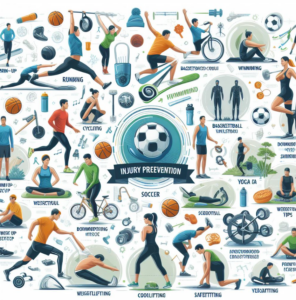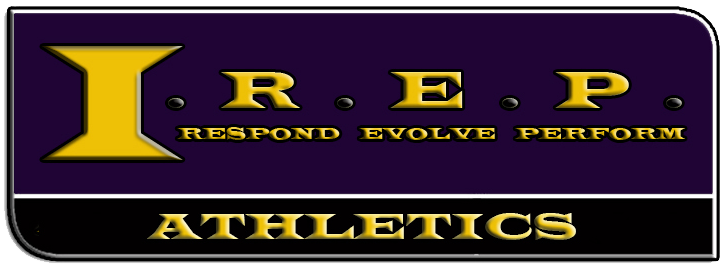 A nuanced understanding of risk factors is fundamental to developing effective injury prevention strategies in sports training programs. These risk factors encompass both intrinsic and extrinsic components. Intrinsic risk factors are those inherent to the athlete and include personal health history, anatomical features, physiological characteristics, age, gender, and psychological factors. For example, a previous injury greatly elevates the risk of a subsequent one, particularly if not fully rehabilitated. Age can influence injury risk as well, with younger athletes being more susceptible to growth plate injuries and older athletes possibly facing degenerative issues. Gender-specific predispositions to certain injuries are also recognized in research, such as higher instances of anterior cruciate ligament (ACL) injuries in female athletes compared to males, possibly due to differences in hormonal, anatomical, and neuromuscular factors.
A nuanced understanding of risk factors is fundamental to developing effective injury prevention strategies in sports training programs. These risk factors encompass both intrinsic and extrinsic components. Intrinsic risk factors are those inherent to the athlete and include personal health history, anatomical features, physiological characteristics, age, gender, and psychological factors. For example, a previous injury greatly elevates the risk of a subsequent one, particularly if not fully rehabilitated. Age can influence injury risk as well, with younger athletes being more susceptible to growth plate injuries and older athletes possibly facing degenerative issues. Gender-specific predispositions to certain injuries are also recognized in research, such as higher instances of anterior cruciate ligament (ACL) injuries in female athletes compared to males, possibly due to differences in hormonal, anatomical, and neuromuscular factors.
The psychological profile of an athlete, including their stress levels, mental health, and ability to cope with the pressures of competition, can also determine susceptibility to injury. Athletes under substantial stress or those with anxiety may exhibit a heightened risk due to tension, distraction, or impaired decision-making during training or competition.
Extrinsic risk factors, on the other hand, refer to external conditions that can influence the likelihood of sports injuries. These comprise the sporting environment, equipment used, training loads and patterns, coaching quality, and even the rules and regulations of the sport itself. Poorly maintained playing surfaces can lead to accidents such as falls or twists, and inadequate or ill-fitting equipment can fail to protect athletes adequately or, worse, contribute to injury. The demands imposed by improper or overly rigorous training without appropriate periods for rest and recovery can lead to overuse injuries, a common issue in sports with repetitive motions such as swimming or running.
Extreme temperatures can increase the risk of heatstroke or hypothermia, while slippery or hard surfaces can augment the chances of falls and impacts. The level of exposure to risk varies among sports—contact sports have a higher prevalence of acute traumatic injuries due to collisions, while endurance sports often see a higher incidence of overuse injuries.
Understanding these risk factors paves the way for implementing targeted interventions. Besides individual assessments for athletes to identify specific vulnerabilities, environmental and equipment-related risks can be minimized through rigorous safety standards and regular reviews. Training regimens can be adapted to adjust loads and incorporate varying types of exercises, hence spreading the mechanical stress across different body areas, and properly scheduling rest days to facilitate recovery.
Dynamic Warm-Ups and Cool-Downs
Dynamic warm-ups are an essential element of any sports training program and serve as a foundation for injury prevention. These warm-ups involve movement-based exercises that prepare the body for the physical activity to come. Unlike static stretching, which can lead to muscle relaxation that may be counterproductive before intense activity, dynamic warm-ups raise the muscle temperature and enhance blood flow, leading to improved oxygen delivery and nutrient supply to the muscles.
Common elements of a dynamic warm-up include light cardiovascular exercises such as jogging or cycling at a low intensity, followed by dynamic stretching that involves controlled leg and arm swings, lunges with a twist, or inchworms. These movements are designed to be sport-specific, mirroring the activity patterns of the sport in question. For instance, soccer players may perform agility drills involving short sprints, changes of direction, and footwork, while swimmers could engage in shoulder rotations and arm circles to prep their upper body for the strains of swimming strokes.
By gradually increasing in intensity, dynamic warm-ups can also provide mental preparation, giving athletes the opportunity to focus on the training session or competition ahead and transition into a performance mindset. These warm-ups are shown to improve subsequent performance, with better coordination and reaction times, likely due to the transient improvements in neuromuscular function.
After the core activity of the sports training or competition has concluded, the cool-down phase becomes an equally crucial component of injury prevention. Cool-downs help in transitioning the body out of an exercised state into a phase of recovery. This part of the training regimen typically includes light aerobic exercise, which decreases the heart rate and body temperature gradually, and static stretches to alleviate muscle tension and promote flexibility. This gentle transition aids in the dissipation of metabolic waste products, such as lactic acid, which may accumulate in muscles during strenuous activity, and reduces the potential for post-exercise muscle soreness.
Cool-downs are a preventative measure against blood pooling in the lower extremities, which can occur if exercise is stopped too abruptly. By continuing light movement, athletes encourage sustained blood circulation, which supports the return of blood from the extremities to the heart and throughout the body.
Strength and Conditioning
Integrating a rigorous and scientifically backed strength and conditioning program is paramount for both enhancing athletic performance and minimizing injury risk. Strength and conditioning go hand in hand, with strength training building muscle power and endurance, and conditioning work ensuring that athletes can perform at their best over extended periods.
Athletes who engage in targeted strength training benefit from fortified muscles, tendons, ligaments, and bones, which together serve as a robust defense against the strain that sports activities place on the body. Resistance exercises, whether using free weights, machines, resistance bands, or body weight, contribute to the development of muscle fibers, leading to increased muscle mass and density.
The role of core strength is particularly vital in a well-designed strength and conditioning program. A strong core, which includes the muscles of the abdomen, lower back, and hips, is akin to a central pillar in the body. This musculature serves as a foundation for almost all athletic movements, providing stability, enabling powerful movements, and reducing the load on the limbs. Core training, therefore, can effectively reduce the risk of lower back injuries, a common issue in many sports, and promote better posture, movement mechanics, and injury resilience.
Conditioning workouts should be formulated to complement strength training by focusing on improving the efficiency of the cardiovascular and respiratory systems. Conditioning exercises can vary greatly, from interval training that improves short burst energy systems to longer-duration endurance activities that enhance the body’s aerobic capacity. Through this combined approach, athletes can sustain higher levels of performance for longer periods, reducing fatigue which, if unchecked, can contribute to a breakdown in technique and an increased injury risk.
An often misunderstood aspect of strength and conditioning is its role in addressing and preventing overuse injuries. By systematically strengthening muscles and connective tissues, as well as promoting muscular balance, athletes can better distribute the stress of repetitive sports actions across different muscle groups. This balance is particularly important since muscle imbalances or weaknesses can lead to altered biomechanics and increased strain on certain structures, predisposing athletes to chronic injuries.
Periodization, the planned variation in training protocols to achieve peak performance, is also applied within strength and conditioning programs to avoid overtraining and to strategically work towards sports season objectives. Properly constructed periodization allows for peak conditioning to coincide with key competitions, while ensuring that athletes receive adequate rest and recovery throughout the cycle.
Proper Technique and Equipment
The significance of mastering proper technique and utilizing appropriate equipment in sports is indispensable for injury prevention. This two-pronged approach ensures athletes perform movements efficiently and are protected to the extent possible during training and competition.
Proper technique instilled through deliberate practice is the bedrock of athletic performance and safety. Each sport has a set of fundamental movements that need to be performed with precision to maximize efficiency and prevent undue stress on the body. For example, in weightlifting, incorrect posture or alignment can place excessive force on the spine or joints, which can lead to acute injuries or chronic pain. In sports like gymnastics or diving, where complex maneuvers are standard, flawless technique is crucial to prevent falls or impacts that can result in serious injury.
Coaches and trainers play a pivotal role in teaching and reinforcing the correct technique. They observe athletes’ performances, offer constructive feedback, and make corrections to ensure that movements adhere to biomechanical principles. Video analysis can be a valuable tool in this regard, giving both coach and athlete the ability to review performance and make precise adjustments. Regular technique drills and skills training will engrain the correct movement patterns in the athlete’s muscle memory, reducing the risk of error under fatigue or pressure.
Moving beyond technique, the equipment used in sports is another critical factor in injury prevention. Helmets, pads, guards, and proper footwear are not just accessories—they are often the first line of defense against injury. For example, in contact sports like American football or hockey, wearing impact-resistant pads and helmets significantly reduces the potential for concussions and other impact injuries. In sports that involve repetitive contact with equipment, such as cycling or rowing, well-designed equipment can reduce the amount of stress transferred to the body, minimizing the risk of overuse injuries.
The fit and condition of the equipment are as important as the equipment itself. Ill-fitted gear can lead to blisters, chafing, and discomfort and, in some cases, can jeopardize the protective features of the equipment, leaving the athlete vulnerable to injury.
In addition to protective gear, the choice of training equipment and playing surfaces can affect injury rates. Athletic shoes with proper support and cushioning can absorb shock and promote alignment; gym mats and flooring need to have enough padding to absorb impacts from falls or jumps and objects like balls and rackets should be chosen to match the athlete’s size and skill level to prevent strain.
An integral aspect of ensuring proper technique and equipment use is education. Athletes should be thoroughly educated on why these aspects are important and how they relate to both their performance and their health. Sports governing bodies and local sports clubs are responsible for setting and enforcing safety standards, ensuring that the culture of safety is upheld from the highest levels of professional sport to the grassroots.
